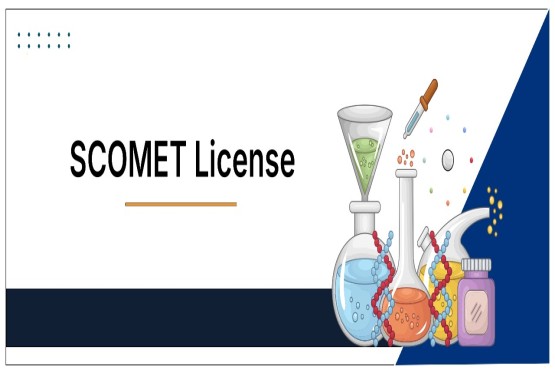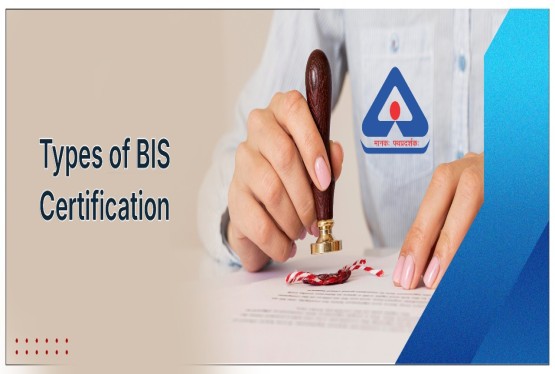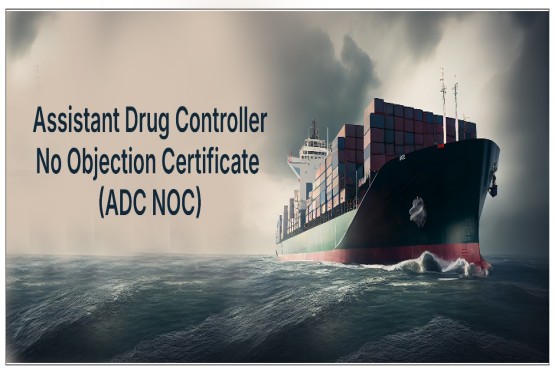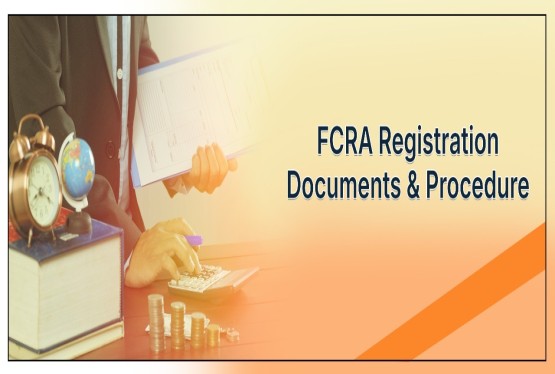When it comes to buying a bed mattress, every customer expects the product to be safe, comfortable, durable, and of high quality. However, to gain this assurance, consumers rely on quality standards that manufacturers must follow. One such important standard in India is IS 13489:2000, set by the Bureau of Indian Standards (BIS). This standard focuses specifically on the quality, safety, and performance of bed mattresses made using various materials. BIS certification under IS 13489:2000 acts as a benchmark that helps manufacturers produce reliable products and helps consumers make informed choices.
What is IS 13489:2000 for Bed Mattresses?
IS 13489:2000 is a national standard laid down by BIS that defines the key parameters for bed mattresses. It includes the production norms, quality checks, testing procedures, and performance requirements that a mattress must meet. The goal is to ensure that the product delivered to the market maintains consistency in performance, meets safety standards, and provides the expected level of comfort and durability.
The standard includes detailed specifications regarding the raw materials used, such as foam, cotton, coir, or polyester. It also covers performance aspects such as resilience, fire resistance, size accuracy, structural integrity, and long-term durability. Manufacturers who comply with this standard provide better customer satisfaction, improve product reliability, and increase market competitiveness.
Importance of BIS Certification for Mattress Manufacturers
BIS certification is not just a legal requirement; it is a mark of trust and quality. When a mattress bears the BIS certification mark, it indicates that the manufacturer has followed the required testing procedures and meets all criteria under IS 13489:2000.
For manufacturers, obtaining BIS certification provides several advantages:
• It builds credibility and consumer trust.
• It ensures compliance with Indian regulations and helps avoid legal penalties.
• It facilitates market access in both domestic and international sectors.
• It improves overall product quality by following structured testing and inspection systems.
Mattress manufacturers should present proof of compliance with IS 13489:2000 in their product specification documents and ensure regular testing using appropriate equipment as specified by BIS.
Standard Specifications under IS 13489:2000
This standard covers various technical and material aspects of bed mattresses, some of which are discussed below:
Material Requirements
According to IS 13489:2000, bed mattresses can be manufactured using materials such as cotton, coir, polyurethane foam, and polyester. These materials must meet strength and safety parameters to ensure that the final product is free from defects, allergens, or fire hazards.
Covering Fabric
The outer covering or upholstery of the mattress must be tear-resistant, durable, and capable of withstanding regular wear and tear. It should not degrade easily under normal use and must be comfortable for the user.
Size and Dimensions
The standard also specifies acceptable mattress sizes, generally including single, double, queen, and king size. Each mattress must meet strict dimensional tolerances to ensure compatibility with bed frames and customer expectations.
Comfort and Support
Comfort is evaluated based on the core materials used in the mattress, such as spring systems, foam density, and layering. The standard ensures that the mattress provides adequate support, conforms to body contours, and retains its shape over time.
Durability
One of the critical parameters of IS 13489:2000 is durability. Mattresses must not lose their structural integrity or comfort level even after repeated use. Long-term compression and stress tests are used to ensure longevity.
List of Testing Equipment for Mattress Evaluation
To ensure that bed mattresses meet the standards defined by IS 13489:2000, manufacturers must conduct several tests. These tests require specific equipment, each of which serves a distinct purpose:
| Test Parameter | Test Equipment | Purpose |
| Material Strength | Tensile Strength Testing Machine |
Measures the breaking strength of the mattress material. |
| Size and Shape | Caliper and Tape Measure |
Verifies mattress dimensions and tolerances. |
| Flammability | Flammability Tester |
Evaluates the mattress’s reaction to fire and heat. |
| Abrasion Resistance | Martindale Abrasion Tester | Assesses the fabric’s ability to resist wear. |
| Compression Durability | Compression Testing Machine | Measures resilience and longevity of mattress structure. |
Using certified testing equipment and adhering to standard testing protocols is necessary for the consistency and reliability of the final product.
Scheme of Inspection and Testing (SIT) for Bed Mattresses
The Scheme of Inspection and Testing (SIT) under IS 13489:2000 is a structured process that outlines the steps manufacturers must take to ensure compliance. This involves multiple stages of quality inspection, from raw material assessment to final product testing.
1. Raw Material Inspection
Before manufacturing starts, all raw materials must be inspected for quality. This includes checking the fabric, foam, coir, and other filling materials. Only materials from approved suppliers should be used. The materials must be tested for strength, allergen safety, flammability, and durability. This step ensures that the base components of the mattress will not compromise the final product’s quality.
2. In-Process Quality Checks
During the production process, regular checks are carried out at various stages. This includes monitoring the stitching, fabric alignment, internal layering, and dimensions. Technicians must verify that the construction matches the specifications in IS 13489:2000. This ongoing inspection helps prevent defects and minimizes wastage during manufacturing.
3. Final Product Inspection
Once the mattress is fully assembled, it undergoes a complete inspection. This includes tests for flammability, pressure absorption, durability, and dimensional checks. Visual inspections are also performed to detect flaws like torn fabric, poor stitching, or irregular sizing. Any mattress that fails this stage must be reworked or discarded.
4. Laboratory Testing Protocol
All major tests must be performed by accredited laboratories following the procedures prescribed in IS 13489:2000. Accurate recording of test results is mandatory. Any deviations from the standard must be documented and corrective measures implemented. This ensures that all products sold under BIS certification maintain uniform quality.
5. Certification Process
For manufacturers to use the BIS certification mark, they must submit their mattresses for official testing. After successful evaluation of all samples and documentation, BIS issues a certificate of conformity. Once certified, the manufacturer can use the BIS mark on their packaging, allowing consumers to trust the product’s compliance with national safety and quality benchmarks.
Future Developments in Mattress Standards
As the mattress industry continues to evolve, so does the scope of IS 13489:2000. BIS regularly reviews the standard to accommodate modern trends, technological advancements, and consumer needs.
Integration of Smart Sleep Technologies
The future of bedding includes smart mattresses with sensors, temperature control, and adjustable features. Future updates to IS 13489:2000 may include standards for these smart functionalities to ensure safety and proper integration.
Focus on Sustainable Materials
With rising environmental concerns, the industry is moving toward eco-friendly materials. BIS is likely to introduce parameters for biodegradable and recyclable materials to encourage sustainable mattress manufacturing.
Enhanced Health and Wellness Features
As health awareness increases, consumers are demanding hypoallergenic, orthopedic, and pressure-relief mattresses. The standard may evolve to include stricter requirements for these health-oriented features, ensuring maximum comfort and well-being.
Documents Required for BIS Certification for Bed Mattresses
1. Application Form
• Properly filled BIS Form VI (Application for Grant of License).
• Must include details of the manufacturer, factory location, and the specific product (bed mattress) for which certification is applied.
2. Manufacturing Unit Registration Proof
• Copy of Certificates (such as GST Registration, Udyam/MSME Registration, or Factory License).
• Partnership Deed or Certificate of Incorporation in case of Private Limited or LLP.
3. Factory Layout and Process Flowchart
• A detailed flowchart showing the production process of bed mattresses.
• Factory layout plan showing machinery, testing area, raw material storage, and finished product area.
4. List of Manufacturing Machinery
• Complete list of all manufacturing machines used in the production of mattresses.
• Including sewing machines, foam cutting machines, compression testing machines, etc.
5. List of Testing Equipment
• List of testing equipment installed at the in-house lab or outsourced testing facilities.
• Must include:
-
Tensile Strength Tester
-
Flammability Tester
-
Martindale Abrasion Tester
-
Compression Testing Machine
-
Calipers and Measuring Tape
6. In-House Testing Capabilities
• Calibration Certificates of testing instruments.
• Details of trained personnel conducting the tests.
• Records of internal quality control and inspection.
7. Raw Material Details
• Purchase invoices and supplier details for raw materials like foam, coir, cotton, polyester, etc.
• Material test reports or quality certificates from suppliers.
8. Product Details and Specifications
• Technical specification sheet of each type of mattress intended to be certified.
• Information such as size, material composition, covering fabric, comfort features, and durability.
9. Test Reports
• Recent third-party or internal test reports proving compliance with IS 13489:2000.
• Reports must be from BIS-approved or NABL-accredited laboratories.
• Should include:
-
Flammability test results
-
Durability and comfort results
-
Fabric strength and abrasion resistance test results
10. Authorization Letter
• If the BIS application is being filed by a consultant or third-party, a proper authorization letter from the manufacturer is required.
11. Trademark Registration (if applicable)
• If the product is being sold under a brand name, a copy of the trademark registration certificate or application acknowledgment.
12. Affidavit/Undertaking
• A signed undertaking confirming that the manufacturer agrees to comply with the BIS regulations, quality standards, and inspection requirements.
13. Utility Bill or Lease Agreement
• Recent electricity bill, rent agreement, or property ownership proof for the manufacturing unit.
14. BIS Mark Approval Sample
• A specimen of the proposed BIS standard mark to be printed or affixed on the product packaging.
15. Payment Receipt of Application Fees
• Proof of payment made to BIS for processing the certification application.
BIS Certification Process: Step-by-Step Guide
To obtain BIS certification for bed mattresses, manufacturers must follow a systematic process:
1. Application Submission – The applicant must submit an application form along with required documents, such as business registration, product specifications, and quality assurance plans.
2. Factory Audit – BIS officials conduct an on-site inspection to evaluate the production process, testing setup, and storage facilities.
3. Sample Testing – Product samples are collected and tested in BIS-approved labs for compliance with IS 13489:2000.
4. Test Report Review – The test results are examined to ensure the mattress meets all quality parameters.
5. Grant of License – Upon successful evaluation, BIS issues a license to use the standard mark.
6. Ongoing Surveillance – BIS conducts periodic audits to ensure continued compliance with the standard.
Conclusion
BIS certification under IS 13489:2000 plays an important role in maintaining the safety, comfort, and durability of bed mattresses in the Indian market. It ensures that manufacturers follow a disciplined approach to quality, use certified raw materials, and test their products rigorously. For consumers, this certification is a symbol of trust, offering peace of mind when investing in a mattress.
As the demand for premium mattresses grows, it becomes all the more important for manufacturers to stay updated with BIS standards and ensure compliance through proper testing and documentation. Additionally, certifications from organizations like Diligence Certifications offer added credibility and help manufacturers build a stronger brand image.
If you are a mattress manufacturer looking to meet the highest quality standards and obtain BIS certification, consult with Compliance Calendar today. You can connect through email at info@ccoffice.in or Call/Whatsapp at +91 9988424211.
FAQs
Q1. What is BIS Certification for Bed Mattresses?
Ans. BIS Certification for bed mattresses is a quality certification issued by the Bureau of Indian Standards (BIS) under the standard IS 13489:2000. It ensures that the mattresses meet specific safety, durability, material, and performance standards. This certification helps assure consumers that the mattress is reliable, comfortable, and made with approved materials.
Q2. Is BIS certification mandatory for manufacturing or selling bed mattresses in India?
Ans. As of now, BIS certification for bed mattresses is voluntary, unless specifically mandated by the government for certain tenders or institutions. However, having BIS certification significantly increases consumer trust, helps in brand building, and can be a requirement for bulk government or export orders.
Q3. What are the benefits of obtaining BIS certification for mattresses?
Ans. Some key benefits include:
• Enhanced product credibility and consumer confidence
• Proof of compliance with national standards (IS 13489:2000)
• Increased competitiveness in domestic and international markets
• Eligibility to participate in government tenders
• Legal protection against complaints related to quality
Q4. What tests are conducted under IS 13489:2000 for mattresses?
Ans. Various tests are conducted to evaluate mattress quality, including:
• Tensile strength test for material durability
• Flammability test for fire safety
• Compression test for durability and comfort retention
• Abrasion resistance test for fabric strength
• Dimension accuracy test to verify mattress size and shape
All these tests must be conducted as per the procedure outlined in IS 13489:2000.
Q5. How long does it take to get BIS certification for a bed mattress?
Ans. The BIS certification process generally takes 4 to 8 weeks, depending on the completeness of the documentation, test results, and inspection report. Delays may occur if the application lacks proper documentation or if the product fails in any of the mandatory tests.
Q6. Can a manufacturer apply for BIS certification for more than one type or size of mattress?
Ans. Yes, manufacturers can apply for certification of multiple types and sizes of mattresses, but they must provide separate test samples and specifications for each variant. BIS may require testing of each product type to ensure compliance under IS 13489:2000.
Q7. Who conducts the testing and inspection for BIS certification?
Ans. Testing is conducted either by the manufacturer’s in-house lab (if approved) or by a third-party BIS-approved laboratory. Final inspections and audits are performed by BIS officials, who verify factory conditions, testing facilities, raw materials used, and ensure compliance with IS 13489:2000.












































































_crop10_thumb.jpg)







_Rules,_2025_learn_crop10_thumb.jpg)























































































_crop10_thumb.jpg)








 in BIS FMCS_learn_crop10_thumb.jpg)


